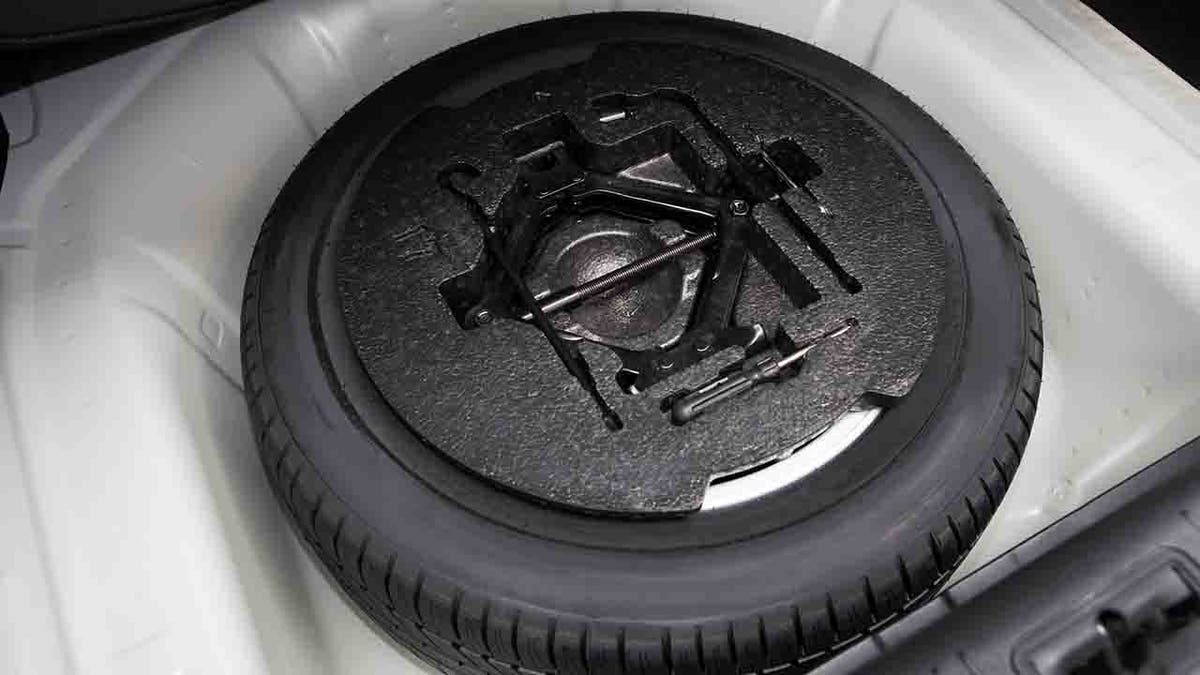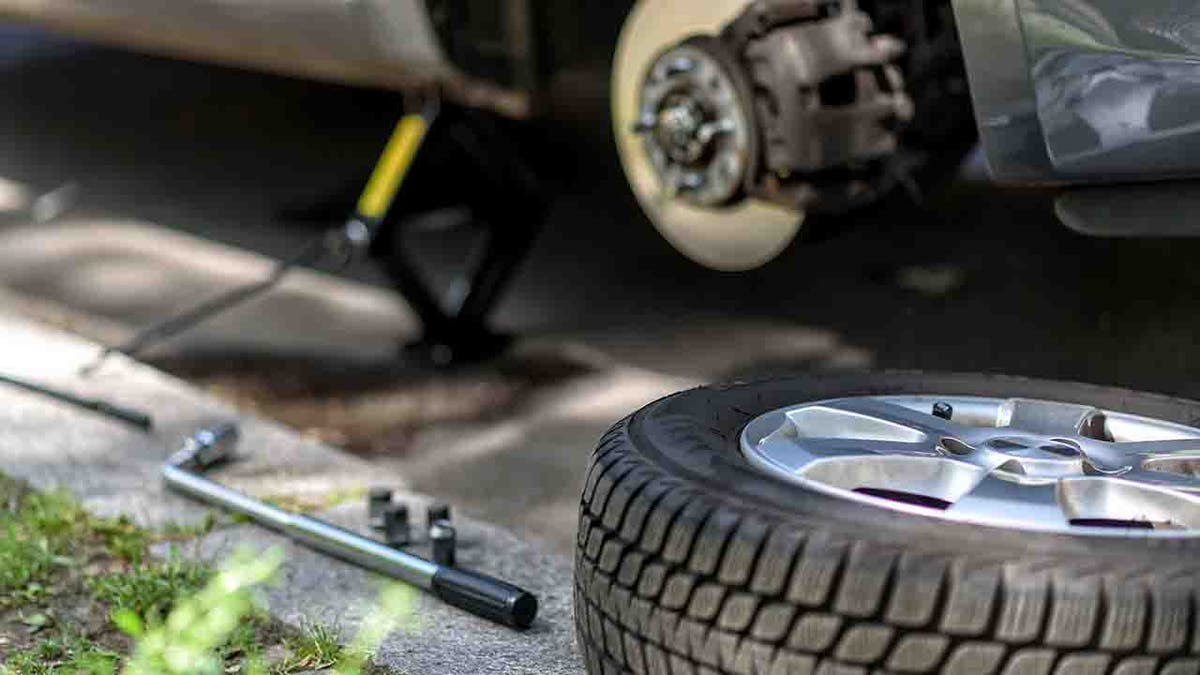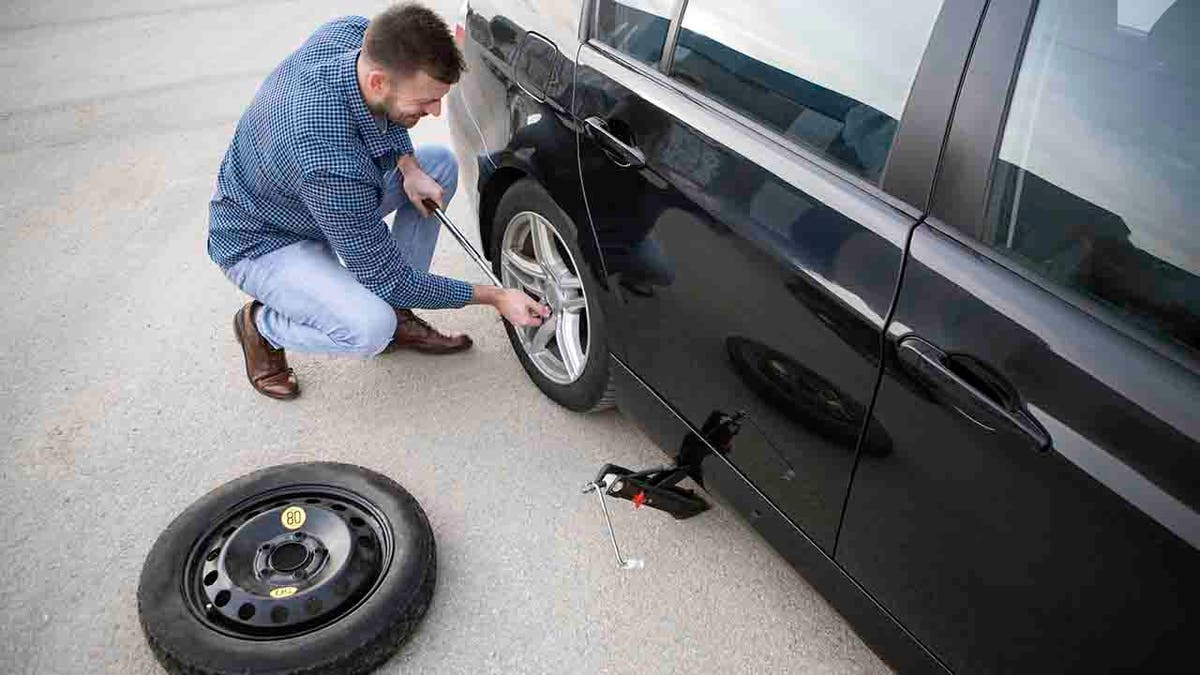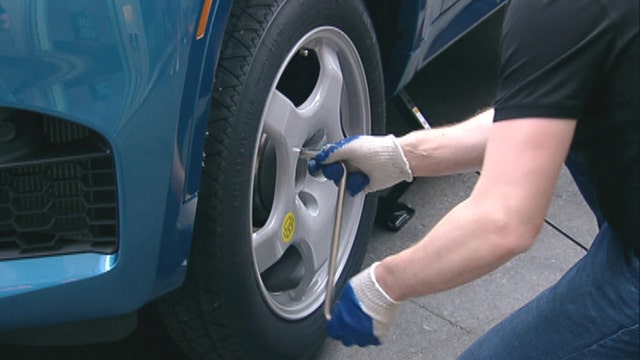Modern cars and trucks are more reliable than ever, but almost impossible for the average person to fix when something goes wrong. Except for one thing: a flat tire.
Wheels and tires have changed over the years, but the way they’re attached to most vehicles has remained pretty much the same for over a century.
Getting a flat is almost always an urgent situation that often occurs in a dangerous place, like the side of a busy road. Throw in rain or snow and matters just get worse.
It’s best to know what to do ahead of time, instead of trying to figure it out on the spot when it happens.
Here are some tips to make sure you’re prepared if it does.

(iStock)
GET TO KNOW YOUR VEHICLE
One of the first things you should do when you get a new vehicle is to become familiar with the location of the spare tire. Most vehicles have them stored in the trunk, while many trucks and SUVs have them mounted underneath the vehicle or on the tailgate door. Some newer vehicles, particularly small ones, don’t even come standard with a spare tire and instead have an emergency sealant and inflation kit that are useful for small punctures, but can’t help in the case of a major blowout. You may want to consider purchasing a spare for added security. Having a flashlight and a pair of work gloves handy is also a good idea.

(iStock)
BLOW IT UP
A traditional spare tire is only good if it has air in it, so check yours regularly. It’s a good habit to do it you're inflating your other tires or when you take your vehicle for an oil change. That said, some models are equipped with non-pneumatic spares that don’t require air.
PRACTICE MAKES PERFECT
Most vehicles use similar scissors-style jacks, but they all work a little differently. Each vehicle also has uniquely designated points near the wheels where the jack needs to be placed. Even if you think you know how to change a tire, you should always read the owner's manual and perform a couple of tire changes with a new vehicle in the safety of your driveway before you hit the road.

(iStock)
LOCATION, LOCATION, LOCATION
Whenever possible, you should park your vehicle on a paved surface before trying to change a tire. A jack can sink into dirt or grass and there’s a danger that the vehicle will fall and cause serious injury or additional damage. If it’s absolutely necessary, a small plank of wood can be used as a platform for the jack on softer surfaces but this method must be approached with extra vigilance.
LIGHT IT UP
Make sure to turn on your hazard lights, whether it’s day or night, and leave the rest of the lights on if it's dark, foggy, raining or snowing. If you have a reflective emergency triangle, set it up a good distance behind the vehicle as an extra warning to oncoming traffic.
EXIT THE VEHICLE
Turn off the vehicle and have any passengers with you get out of it. The extra weight and movement inside the vehicle could be dangerous when you lift it.
BRAKE CHECK
Whether your vehicle has an automatic or manual transmission, make sure it’s in park or gear with the emergency brake applied before you begin working on the tire. A set of wheel chocks can be used to further secure the vehicle.

(iStock)
LIFT, THEN LUG
Remove the hubcaps if your vehicle has them, then use the jack to lift the vehicle a few inches, but stop before the tire comes off the ground. While the rubber is still on the road, use the wrench to loosen, but not remove the lug nuts.
GOING UP
Continue raising the vehicle until there’s just enough space under the tire to remove it. Since the spare will be the same size or smaller, there’s no reason to raise it too high, which just makes the lifted vehicle more unstable.
UNSCREW IT
Now, use the wrench or your fingers to remove the lug nuts and place them somewhere nearby where they won’t get dirt in their grooves. It’s not absolutely necessary to keep them in order, but it doesn’t hurt.

(iStock)
TAKE IT OFF
Pull the tire off the bolts. Rocking it or lifting as you pull sometimes helps. If you discover during practice the wheels and tires on your vehicle are too heavy for you to handle, you’ll want to plan on relying on a roadside assistance service in case of emergency, instead.

(iStock)
REVERSE THE PROCESS
Now you can install the spare tire and wheel, which will be lighter than flat one in most cases. Be careful not to bang it into the body or the brakes as you slip it onto the bolts. Once it’s all the way on and straight, use your fingers to reattach the lug nuts tightly enough to hold it in place.
(Note: Instead of lug nuts, some vehicles use integrated lug bolts. In this case, you have to put the wheel on the hub and then rotate the tire to line up the holes on it with the ones in the hub before inserting the lug bolts into them.)
GET DOWN
Lower the vehicle so the tire is just touching the ground again. Use the wrench to tighten the bolts fully then let the vehicle the rest of the way down and give them one more cinch.
HIT THE ROAD, BUT TAKE IT SLOW
Most temporary spares have a speed or distance limits indicated on them that you need to adhere to. You’ll also want to take extra care on slippery surfaces because they don’t provide as much traction as the standard tires. Some vehicles, particularly off-roaders, still have full-size spares that don’t have these limitations, but you’ll still want to get the flat fixed or replaced as soon as possible.




















